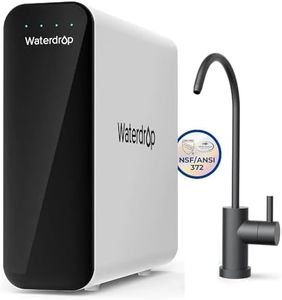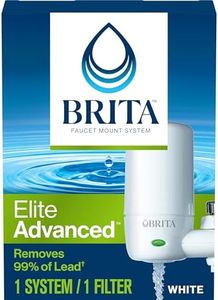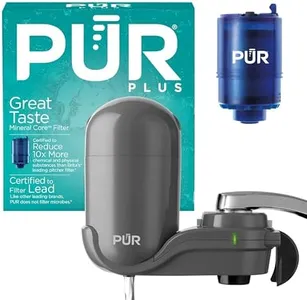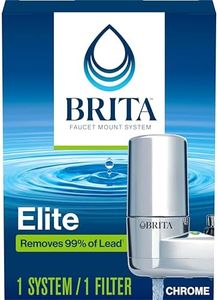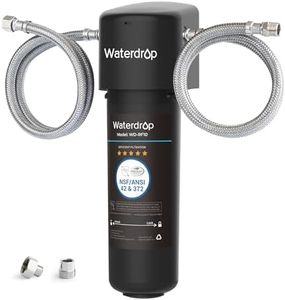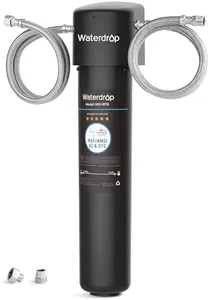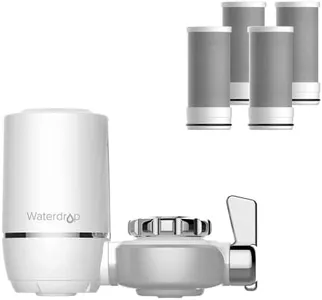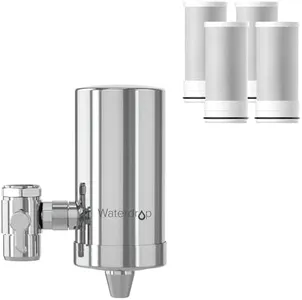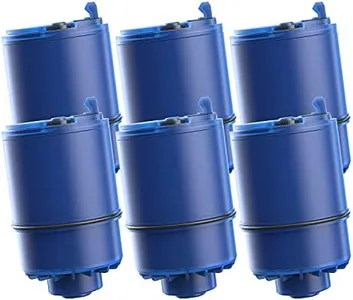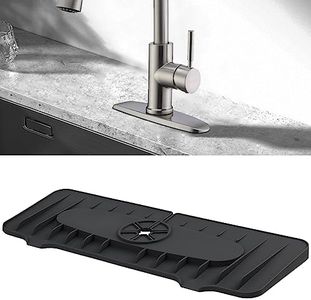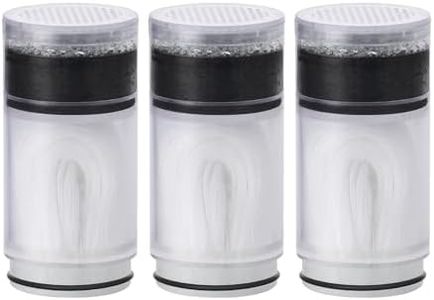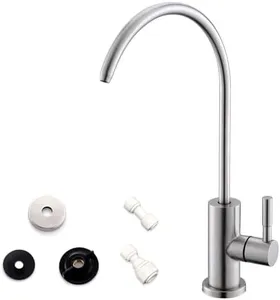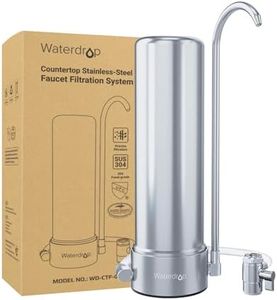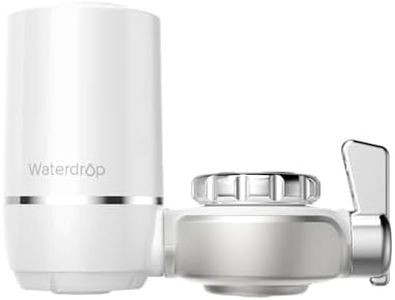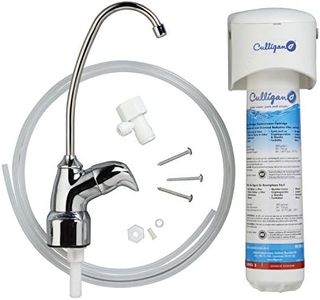10 Best Faucet Water Filters 2025 in the United States
Our technology thoroughly searches through the online shopping world, reviewing hundreds of sites. We then process and analyze this information, updating in real-time to bring you the latest top-rated products. This way, you always get the best and most current options available.

Our Top Picks
Winner
Brita Faucet Mount Water Filter for Sink, Removes 99% of Lead, Elite Advanced Filtration System, Includes 1 Replacement Filter, White
The Brita Faucet Mount Water Filter is designed to improve the taste and safety of your tap water, making it a great choice for households looking to enjoy cleaner drinking water. With its Advanced Brita Carbon-Block Technology, it effectively reduces contaminants, including 99% of lead, while cutting out the unpleasant taste and odor of chlorine. This makes it particularly beneficial for families concerned about water quality.
One of the standout features is the convenience of installation, requiring no tools and fitting most standard faucets with easy adaptability. The multiple spray options allow users to choose between filtered, unfiltered, or unfiltered spray, adding versatility for different uses in the kitchen. The filter lifespan is approximately 100 gallons or four months, which is manageable for regular use. The included filter indicator is a helpful touch, ensuring you know when it’s time for a replacement. Additionally, using this filter can significantly reduce plastic waste, as it potentially replaces the need for over 2,200 single-use plastic bottles a year, appealing to environmentally conscious consumers.
On the downside, the filter may not be compatible with pull-out or spray-style faucets, which limits its usability for some households. Also, while the flow rate is decent, some users may find it less powerful than a traditional faucet without a filter. Maintenance is straightforward but requires regular filter changes to maintain filtration effectiveness. It’s also important to note that the product's performance may vary depending on the water quality in your area. This faucet water filter is well-suited for those seeking easy installation, effective removal of harmful contaminants, and a sustainable option for drinking water, though users should ensure compatibility with their specific faucet type before purchasing.
Customer Highlights
A summary of real customer reviews to highlight what shoppers are saying!PUR PLUS Vertical Faucet Mount Water Filtration System with 3-in-1 Lead Reducing Filter for Great-Tasting Filtered Tap Water, Lasts 100 Gallons, Fits Most Kitchen or Bathroom Faucets, Grey
The PUR PLUS Vertical Faucet Mount Water Filtration System offers powerful 3-in-1 filtration technology, certified by WQA and NSF to reduce 70 chemical and physical substances, including lead and microplastics, making it a reliable choice for ensuring cleaner, better-tasting water. Its filter lifespan is up to 100 gallons or approximately 3 months of regular use, which is fairly standard for faucet filters. One highlight is the ease of installation – it features a quick, 1-click, tool-free setup and includes an on/off lever for convenient access to filtered water on demand.
Additionally, the filter change light provides a helpful reminder when it's time to replace the filter, ensuring continuous effective filtration. The PUR PLUS system is compatible with most standard faucets, making it versatile for different kitchen or bathroom setups. Economically, it promises potential savings of up to $30 a week compared to bottled water. However, one potential drawback is that the product may not fit all faucet types, particularly non-standard designs.
Another consideration is maintenance; while the exterior cleaning is straightforward, the need for filter replacements every 3 months may be more frequent than some users prefer. The product is lightweight at 1.2 pounds and has compact dimensions of 6.4 x 2.8 x 5.4 inches, making it unobtrusive on your faucet. Trusted for over 35 years, PUR's rigorous filtration standards ensure a high level of reliability in water purification. This faucet water filter system is ideal for households seeking a cost-effective, easy-to-install solution to improve tap water quality.
Customer Highlights
A summary of real customer reviews to highlight what shoppers are saying!Brita Faucet Mount Water Filter for Sink, Removes 99% of Lead, Elite Filtration System, Includes 1 Replacement Filter, Chrome
The Brita Faucet Mount Water Filter is a convenient choice for those looking to improve the taste and safety of their tap water. It features an Elite filtration system that removes up to 99% of lead and other contaminants like chlorine and asbestos, ensuring healthier drinking water. The filter is easy to install with no tools required and fits standard faucets, though it is not compatible with pull-out or spray-style faucets.
The status indicator is a helpful feature, notifying you when the filter needs to be replaced, which is approximately every 100 gallons or four months. This can save you money and reduce plastic waste by eliminating the need for single-use water bottles. The space-efficient design is available in chrome and white, and the filter allows you to switch between filtered and unfiltered water easily.
However, the flow rate may be slower compared to unfiltered water, which could be a drawback for some users. Additionally, while installation is generally straightforward, users with non-standard faucets may face compatibility issues. Maintenance involves regular filter replacements, but this process is simplified with the one-click replacement feature. The Brita Faucet Mount Water Filter is a solid choice for households with standard faucets looking for an effective and easy-to-use filtration solution.
Customer Highlights
A summary of real customer reviews to highlight what shoppers are saying!Buying Guide for the Best Faucet Water Filters
Choosing the right faucet water filter can significantly improve the quality of your drinking water by removing contaminants and improving taste. To find the best fit for your needs, it's important to understand the key specifications and how they relate to your specific requirements. Here are the main factors to consider when selecting a faucet water filter.FAQ
Most Popular Categories Right Now
